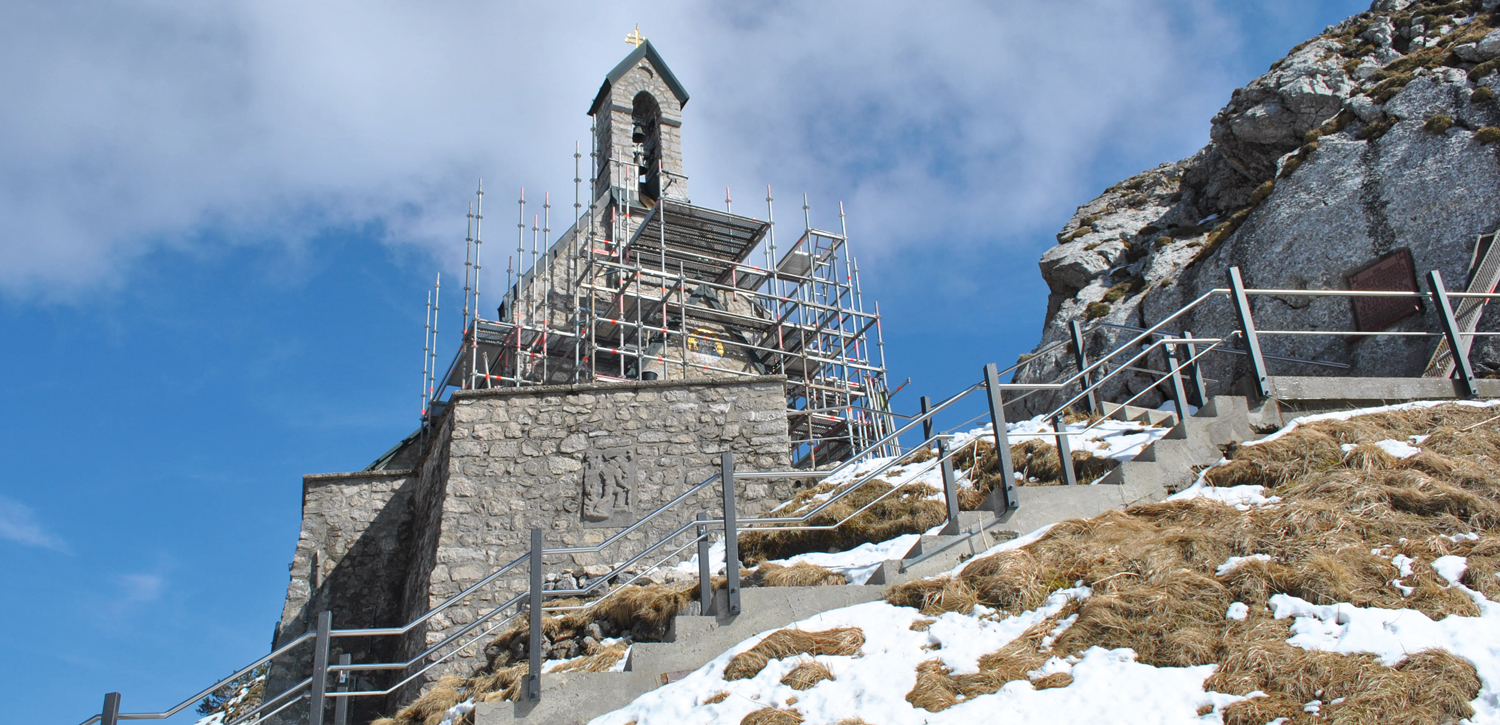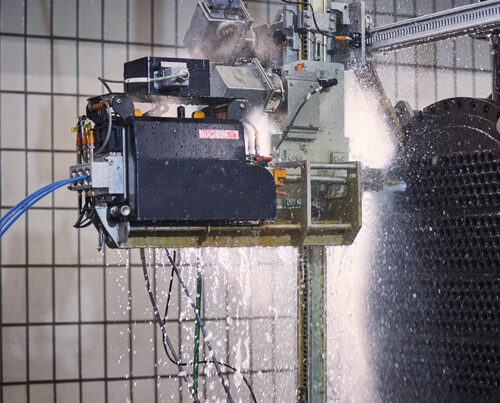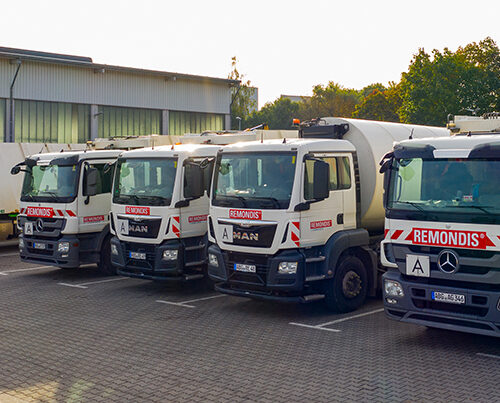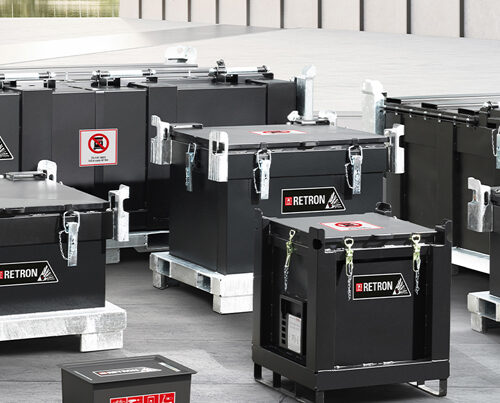The Schneefernerhaus – a research station dedicated to climate and high altitude research work – can be found on the south flank of the Zugspitze, Germany’s highest mountain. Located 2,650 metres above sea level just below the mountain’s summit, this twelve-storey building extends out from the grey rock like an eagle’s nest and enables scientists from a variety of institutes to study the atmosphere, biosphere and many other topics. This research work delivers important findings as the Zugspitze is a good place to measure both climate-relevant processes and the impact of climate change.
Experience the work up close: watch a short film about this unusual assignment
Protecting the research centre against falling rocks
Last year, XERVON erected a scaffold on a section of the sheer rock face immediately behind the research station. 28 metres long, this two storey protective and work platform was built up the side of this almost vertical wall of rock. The lower storey spanned a section of rock approx. five metres in height and the second went up a further six metres. The scaffolding provided safe access to the rock face so that it could be stabilised with shotcrete – renovation work that was urgently needed to protect the Schneefernerhaus and the scientists working on its platforms from being hit by falling rocks.
The specialists needed three days to erect the scaffold close to the peak of Germany’s highest mountain. They were able to do this so quickly thanks to the meticulous work that had been carried out beforehand to prepare the project, especially the organisation of the material and logistics. While most of the Zugspitze has been developed to cater for tourists, this high alpine region is by no means easy to access. It was not possible, for example, to use standard freight vehicles. Which meant that each individual part of this 9.5-tonne scaffold had to be transported up the mountain on the Zugspitze cogwheel train and carefully packed up so that they did not exceed the train’s load limit.
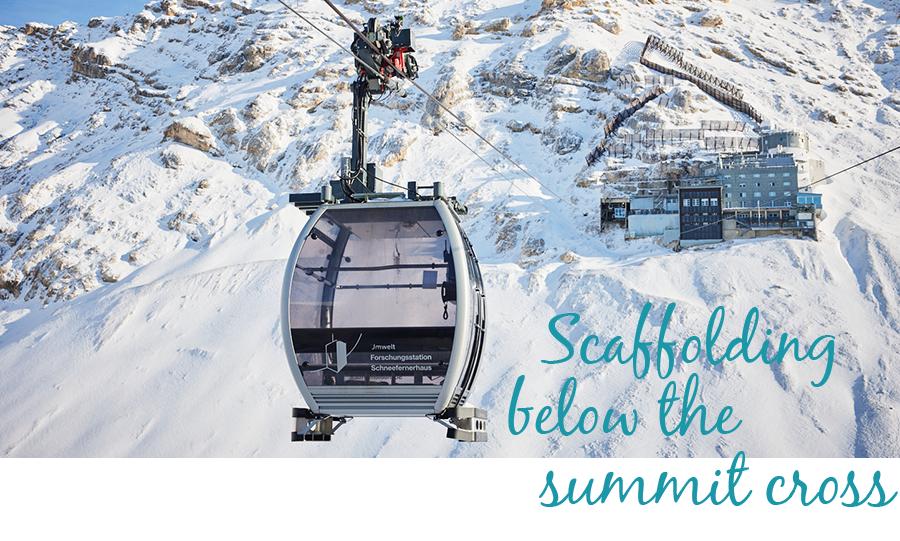
Once the scaffolding material arrived at the glacier railway station, the team had to first unload it and take it to the Schneefernerhaus by handcart – there were no motorised devices there to help them – and then carry it by hand up to one of the research station’s roofs. XERVON had set up a stair tower beforehand to cover the last few metres from the roof to the actual workplace. The team themselves had taken the cable car to reach the top of the mountain and stayed overnight at the research station. The tight schedule meant that travelling up and down the mountain every day was out of the question.
Winter weather in the middle of summer: the scaffolding team often had to stop work for their own safety as they contended with thick fog, snowfall and strong winds.
Erecting scaffolding in extreme conditions
Professional scaffolding often requires exceptional services. Especially when the scaffolds have to be erected in challenging environments like the Zugspitze project described above. XERVON’s scaffolding is in high demand for such complex building projects, all the way up to the top of mountains. Making the very most of its know-how and extensive stocks of material, this scaffold business ensures there is safe access to all types and sizes of plants, buildings and other constructions. No matter whether it involves conventional façade scaffolding, complex industrial scaffolds or bespoke structures: XERVON delivers all of the services required itself – from the planning, to the structural engineering work, all the way through to erecting the scaffolds.
Two other assignments further underline how such extreme scaffolding projects can be successfully mastered with end-to-end planning, well-thought-out logistics, a flexible approach and specialist know-how.
Preserving Patrona Bavariae Wendelstein Church
It could be the perfect setting for a sentimental film: built on a rocky crest, Patrona Bavariae Wendelstein Church seems to hover high up on the top of the mountain and offers a truly spectacular panorama of the Alps. This neo-Gothic house of worship was consecrated in 1890 and looks very much like a chapel. It is, however, Germany’s highest church and a famous landmark of Mount Wendelstein.
Located 1,740 metres above sea level, Wendelstein Church is very much exposed to the vagaries of the alpine weather. When the decision was made to carry out extensive renovation work on the weather-worn walls and roof, XERVON was called in to erect the scaffolding around the outside walls of this unusual building. It is not possible to do building work all year round in such high alpine regions.
Good weather is a must. This meant that all of the renovation work that needed to be done on Patrona Bavariae had to be completed in the summer season. A very narrow time window that also required the scaffolding to be put up quickly. XERVON had just five days to transport seven tonnes of material up the mountain and erect five tonnes of scaffolding.
XERVON first transported the material by train using the special waggons provided by the Wendelstein cog railway. After that, the team had to carry it up the final few metres to the church themselves. The first phase of the project saw them erecting a scaffold around three of the church’s walls, all of which was able to stand on the ground.
The plans for the second phase of the project was for them to erect a suspended scaffold on the south-facing fourth wall as it was built on the edge of a steep slope. To reduce the amount of material that had to be transported and to save precious time, XERVON had intended to use the scaffolding material from the other walls to erect this suspended scaffold. In the end, however, the second phase had to be postponed. The weather threw a spanner in the works even though this project took place in the summer. The weather conditions were so bad that the renovation work was unable to be completed as planned. The delay caused by this meant that the renovation of the church’s south wall had to be put off until another time.
Future-proofing the Hunerkogel mountain station
The mountain station of the Dachstein glacier cable car is located on the border between the Steiermark and Upper Austria, 2,700 metres above sea level. Built on the Hunerkogel summit plateau, it enables visitors to access the Dachstein glacier and provides a spectacular panoramic view of the region. Extensive work began last September to renovate the mountain station, which had been built back in 1969. This is certainly the ‘project of the century’ as far as the operators of the Dachstein glacier cable car are concerned as it has a number of key goals: to preserve this very special building, make it more sustainable and make the Dachstein Glacier World even more attractive.
The station is to get 633m² of solar cladding so it can supply itself with green energy.
A number of tasks are to be carried out on this futuristic-looking mountain station during the nine-month project, including installing a 1,000m² glass façade to provide visitors with a clear view of the surrounding Alpine peaks. At the same time, it is to get 633m² of solar cladding so it can supply itself with green energy. XERVON Austria’s specialists have surrounded practically the whole of the mountain station with scaffolding so that the work can be carried out on the façade. All in all, it used around 12 tonnes of scaffolding material to do this, which was transported up the mountain in special ‘team cable cars’. Setting up the scaffolding on the rocky surface was a particular challenge, especially as much of the station is built right next to the edge of sheer cliff faces.
With the alpine weather conditions factored in, most of the work done on the outside of the building was completed before winter began. The teams then worked on the inside of the station during the coldest months. The project – probably the highest ever to be carried out in Austria – is due to be completed in May 2024. This will herald a new era for visitors to the Dachstein World. Skiing and snowboarding are no longer permitted on the Dachstein glacier because of the negative impact this has on the environment. The UNESCO world heritage site Dachstein will, however, continue to be a fascinating place to visit thanks to the completely modernised mountain station.
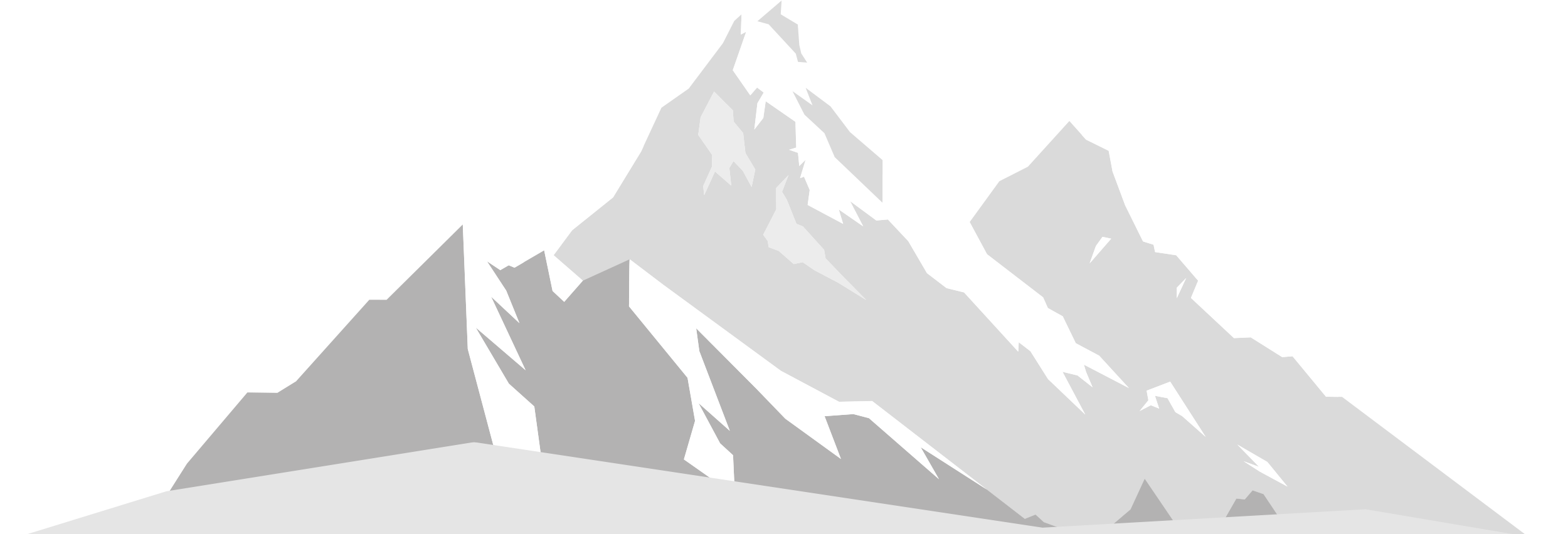
Image credits: © REMONDIS


